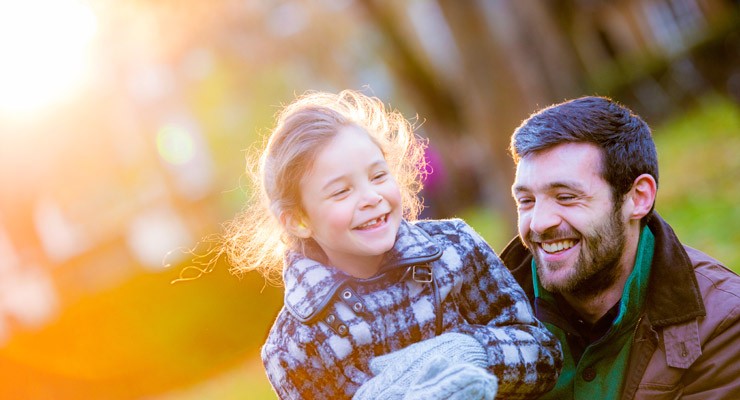The Basics of Asthma in Children
There's no cure for childhood asthma, but it can be controlled. Here's a primer on childhood asthma symptoms, diagnosis and treatment.

Asthma is a chronic inflammatory illness of the airways. If not properly managed, it can keep a child awake at night, home from school or off the playing field. Asthma is also a leading cause of emergency room visits. But don't wait for a serious asthma attack that requires emergency care. If you think your child could have asthma, see your pediatrician or family doctor so your child can be diagnosed and treated.
What happens in asthma?
As a child breathes, air flows in and out of the lungs through airways. With asthma, the airways are hypersensitive and overreact to certain triggers like allergens (such as pollen, dust, or animal dander), irritants or cold, dry air. In response to these triggers, muscles around the airways tighten and cells in the airways may make extra mucus. The result is narrowed airways that limit air flow into your child's lungs. This causes wheezing and trouble breathing.
Signs your child may have asthma
Only your doctor can diagnose asthma for sure. But you may suspect asthma if your child has the following symptoms:
- Wheezing, a whistling sound when your child exhales
- Frequent coughing, which often occurs at night or after running or crying
- Shortness of breath
Young children may become irritable and complain that their chest hurts or "feels funny." They may get tired after playing for a short time or have frequent bouts of bronchitis or pneumonia.
Call 911 if your child has severe symptoms such as:
- Severe difficulty breathing (is out of breath and having a hard time walking and talking)
- Bluish lips or fingernails
- Severely agitated or confused
How is asthma diagnosed?
Your doctor may make a diagnosis based on a physical exam, as well as your family history of asthma or allergies. During your visit, it will also help to share your child’s symptoms, when they occur and what seems to bring them on. Triggers are important clues. They may include:
- Colds. Wheezing in children often goes along with an upper respiratory tract infection.
- Exercise or activity. You may notice your child wheezing when at play.
- Allergens. Airborne allergens are common triggers in children and include dust, mold, pollen and animal dander. You may notice that your child wheezes when pollen counts are high (in the spring and fall), when the vacuum cleaner kicks up dust or when the child plays with a pet.
- Irritants. Airborne particles can irritate airways. Strong odors from perfumes or hairsprays may make your child wheeze. Secondhand tobacco smoke is a powerful irritant trigger. Children with asthma must live in a smoke-free zone.
- Weather, especially cold, dry air in the winter.
- Stress or strong emotions such as anger, crying, laughing or worrying.
A diagnosis may also be made using the results of a lung function test called spirometry. This test checks lung function by taking a reading before giving medication to your child, then taking another reading after your child puffs on an inhaler. Improvement after taking the inhaler shows that airway narrowing is reversible. This is a strong sign that your child has asthma. Note: For children ages 5 and younger, this test is difficult to do. Your doctor may diagnose asthma based on symptoms, physical exam and family history.
How is asthma treated?
Use medications as directed
Persistent asthma is usually treated with a long term control (controller) medication and when needed, quick-relief (or rescue) medication. The quick-relief medication is an inhaler that your child uses when he or she has symptoms. It may also be used before exercise to prevent symptoms. The controller medication, usually an inhaled corticosteroid, is taken every day to control the underlying inflammation that causes asthma.
Follow the asthma action plan
An asthma action plan is a written record of the treatment plan. It is a set of step-by-step instructions based on your child's symptoms and peak flow number. It is a vital part of treatment because, if followed, it can help your child avoid emergency room visits. If your child does not have an asthma action plan, discuss this with your provider at your next appointment.
Keep it in a handy place at home. Give copies to the school nurse, coaches and child care providers. The action plan includes:
- Names of medications and how to take them (frequency, number of puffs)
- Instructions on what to do for worsening symptoms
- Doctor's contact information
- A list of triggers and how to avoid them
By Louis Neipris, MD, Contributing Writer
Sources
National Heart, Lung and Blood Institute. National Institutes of Health. NAEPP expert panel report 3: Guidelines for the diagnosis and management of asthma. Accessed: January 4, 2016.
National Heart, Lung, and Blood Institute. What is asthma? Accessed: January 4, 2016.
American Lung Association. For parents with children who have asthma. Accessed: January 4, 2016.
National Heart, Lung, and Blood Institute. How is asthma treated and controlled? Accessed: January 4, 2016.
Last Updated: January 11, 2016
